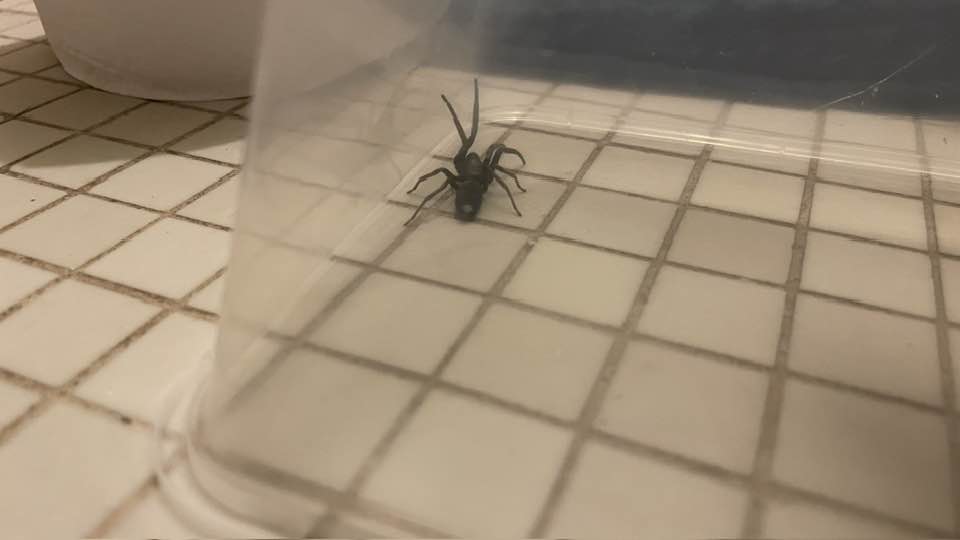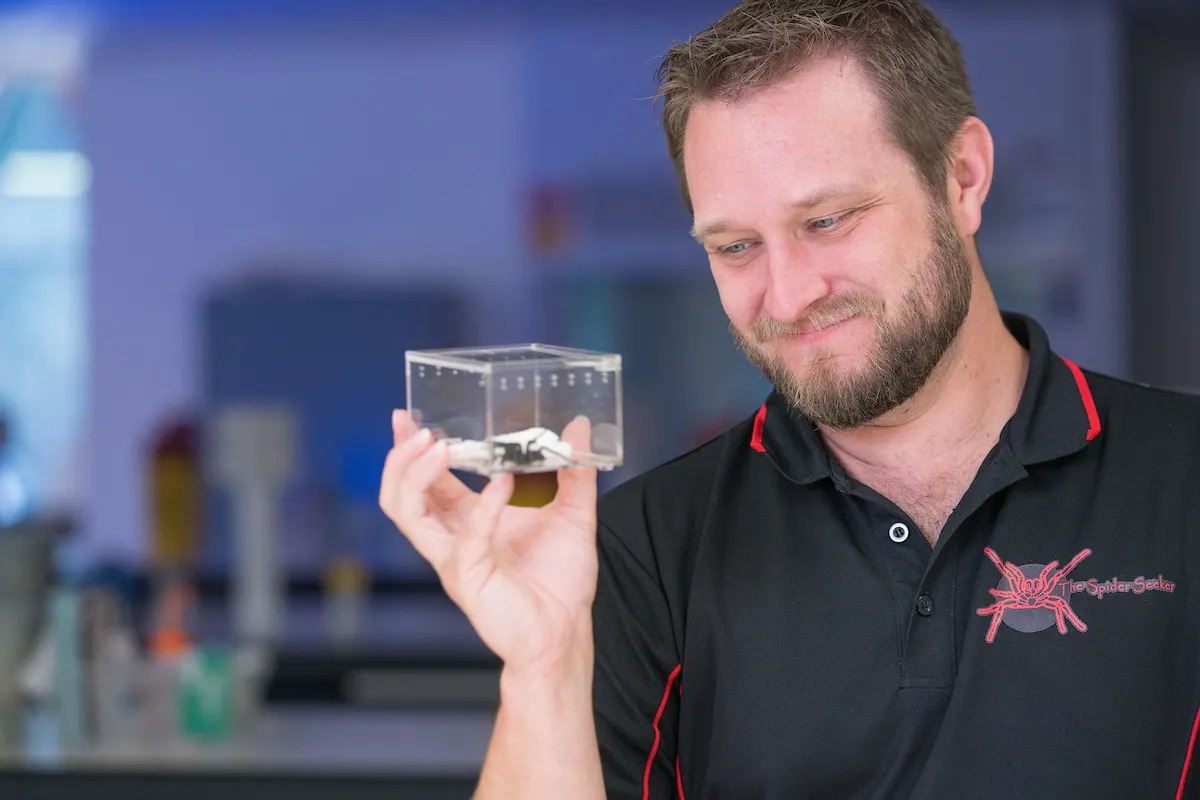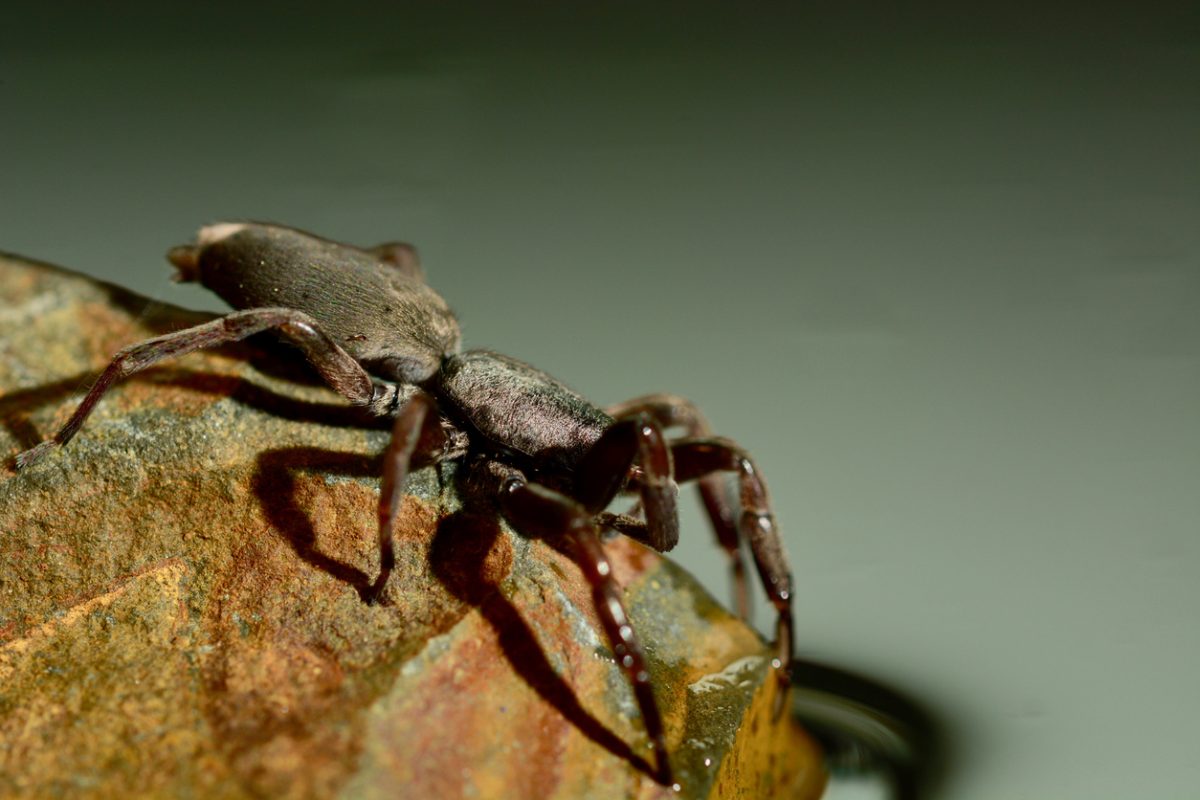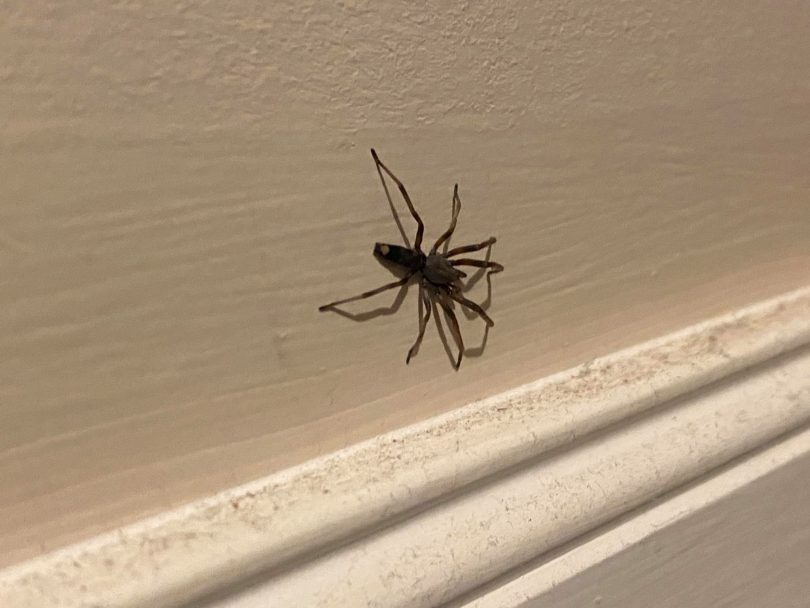
The white-tailed spider caught by Marilouise Rijven. Photo: Marilouise Rijven, Canberra Notice Board Group, Facebook.
The white-tailed spider debate is back.
Marilouise Rijven found a whopper in her bathroom and posted a series of photos to the Canberra Notice Board Group with a warning to “NOT leave clothes on the floor and check your hand towels”.
“That’s where this guy came from – the biggest white tail I’ve ever seen,” she wrote on 28 October.
A couple of commenters regaled stories of relatives who had nearly lost limbs after a bite from the infamous white-tailed spider.
One subsequently told Region her dad was told to “go straight to hospital” by his GP after he was bitten by a white tail that had crawled inside a pair of tracks pants.
“The wound started to go gangrenous … and the hospital said had he not sought treatment when he did, they likely would have amputated.”
A study in 2003 claimed to have put this to bed as a myth when researchers surveyed 79 bite victims over 39 months and found “no cases of necrotic ulcers or confirmed infections”.
It concluded that bites by the spider “cause minor effects in most cases, or a persistent painful red lesion in almost half the cases”.
“White-tail spider bites are very unlikely to cause necrotic ulcers and other diagnoses must be sought.”
But to this day, Dave Rowell from the ANU’s Research School of Biology prefers to steer clear from public conversations about white tails.
“Whenever I point out that they are not considered dangerous, I get flamed and get threats,” he says.

Ben Shoard is almost an arachnophile. Photo: Nic Vevers/ANU.
Ben Shoard, administrator for the Australian Spider Identification Page on Facebook, is another.
“I generally avoid stepping into the arguments on community pages because they get pretty ugly pretty quickly.”
Both hold white tails are severely misrepresented.
Dave largely blames GPs for this.
“There is a thing called ‘Buruli Ulcer’ or ‘Gippsland Itch’ that causes nasty necrosis and is bacterial,” he says.
“It is possibly the thing that has given rise to the white tail myth, but no direct connection has ever been made. Again, I think this is about GPs scrabbling for a possible cause … Someone gets ‘Gippsland Itch’ or something similar and their GP asks them if they’ve seen a white tail in the last three months. As pretty much everyone in Australia has, the patient says ‘yes’, and the GP says ‘AHA!’.”

White-tail venom doesn’t contain the toxins required to cause necrosis. Photo: File.
Ben says cases of gangrene and amputations are almost certainly down to people not caring for their wounds properly.
“According to the evidence published, the cause is most likely not related to spider bites in most cases. If it is, it’s more likely related to the wound care following the bite, after the venom is washed out.”
White tails are “specialist hunters” by nature, known for taking out redbacks, house spiders, and even daddy-long legs.
“They will sit at the boundary of the web and start picking at it, trying to draw the spider out,” Ben says.
“They then try their best to sneak up and bite the leg of the other spider to weaken it so it can then be slowly devoured over a couple of days while the white tail benefits from the protection of the web.
“This is why they are often found wandering around the house, searching for spiders that might have set up their home in yours.”
This debunks one of the theories that white tails live in leaf litter and eat detritus, making them dirtier and increasing the risk of infection.
Another is that white tail venom incorporates the venom from the spiders it eats to create its own “supervenom”.
“At least there is some biological basis for this, such as in the nudibranch group where the Blue Glaucus mollusk incorporates the poison from its prey to make itself toxic, but there is no evidence of this happening in spiders,” Ben says.
As it is, the venom of a male white tail contains small amounts of histamine and norepinephrine (or noradrenaline) – chemicals already present in the human body – but not necrotoxins which, as the name suggests, cause necrosis.
“Their venom is very effective at taking down would-be prey (other spiders) but serves quite poorly in defence since it is not effective against humans or pets.”

White tails hunt for other spiders, like black-house spiders and redbacks. Photo: Ben Shoard.
Shortly after the 2003 study, more Australian researchers decided to get to the bottom of the horror stories and looked at 11 severe cases of white-tail spider bites.
They found a variety of conditions, including two cases of dermatophytoses, three staphylococcal infections, one case of pyoderma gangrenosum, one case of cutaneous polyarteritis nodosa, one case of Nocardia braziliensis and one infected diabetic ulcer.
But nothing directly linked to venom.
So what can you expect when you feel a sting while slipping on your trousers?
The Australian Government’s Health Direct website says the bite of a white tail can cause “an initial burning pain, swelling and itchiness”.
“White tail spiders aren’t considered dangerous to humans. Current evidence suggests that skin ulceration (necrotising arachnidism) isn’t commonly due to a white-tail spider bite.”
It recommends you “apply a cold compress to the bite site for 15 minutes” and “reapply as needed”.
Original Article published by James Coleman on Riotact.





